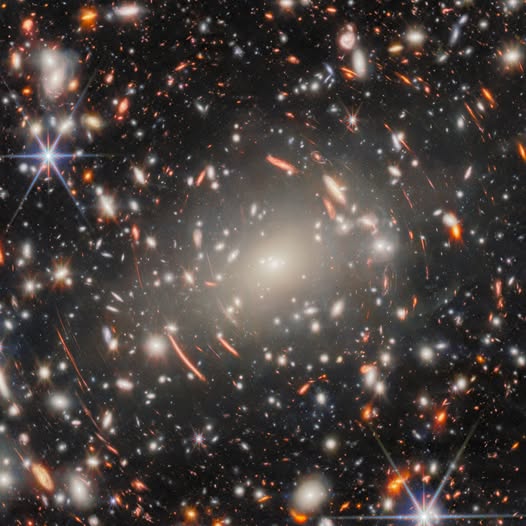
The James Webb Space Telescope has just released its deepest view of a single target — and it’s a breathtaking window into the early universe.
This remarkable image, captured over 120 hours, centers on a massive galaxy cluster named Abell S1063, located 4.5 billion light-years away. But it’s what lies behind this cluster that truly captivates astronomers.
Thanks to a phenomenon called gravitational lensing, the immense gravity of Abell S1063 bends and magnifies the light from even more distant galaxies — warping them into the faint arcs seen surrounding the cluster. These background galaxies date back to the “Cosmic Dawn,” when the universe was only a few hundred million years old.
By analyzing this image across nine different near-infrared wavelengths, scientists hope to uncover how the very first galaxies formed and evolved. This observation not only showcases Webb’s unmatched sensitivity and resolution, but also helps us peer back to a time when the first stars lit up the cosmos.
Webb’s discoveries are already rewriting textbooks. Early results suggest that galaxies in the infant universe were far larger and more mature than expected, hinting at possible cracks in our current understanding of cosmology.
This is not just a picture — it’s a time machine.
